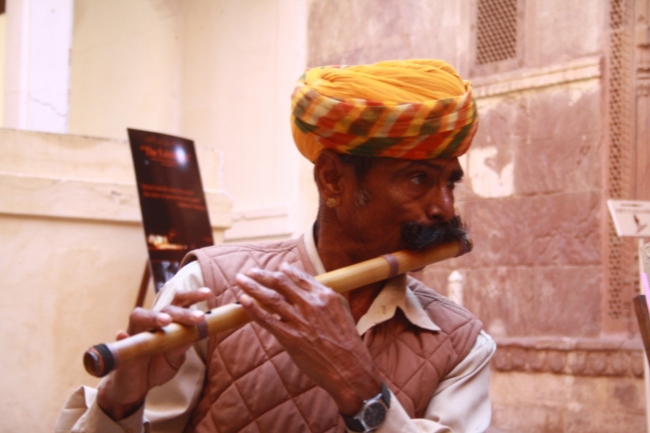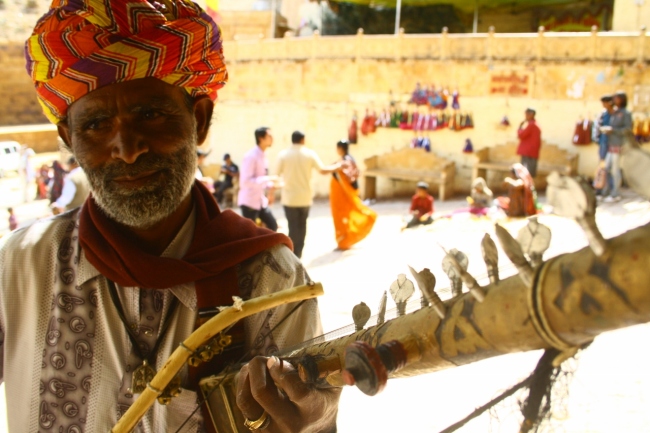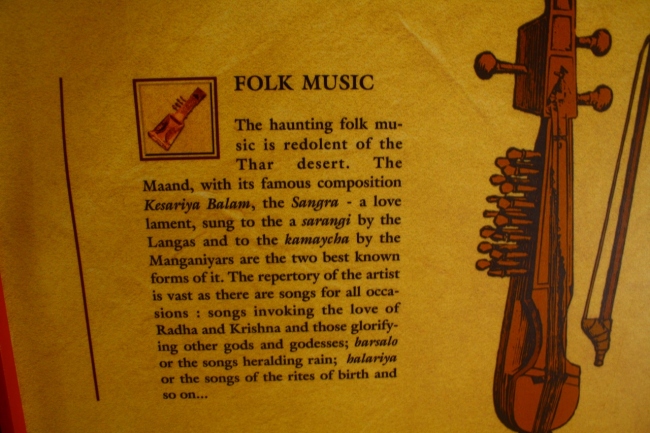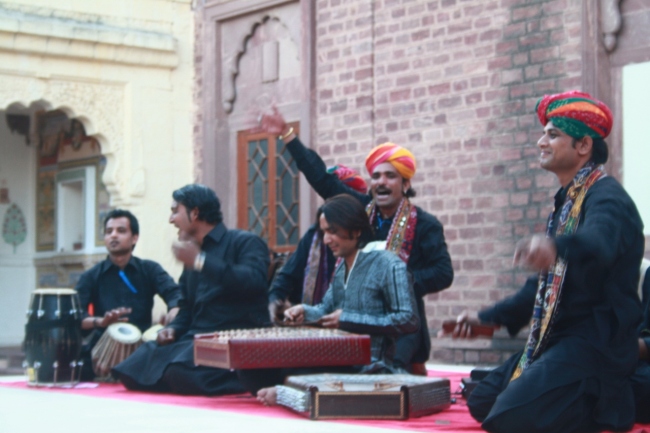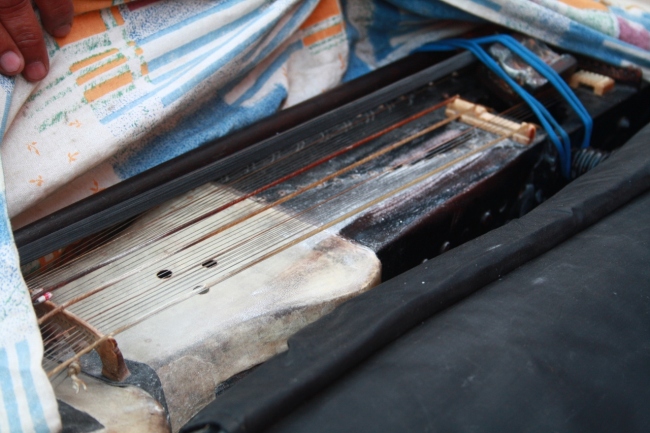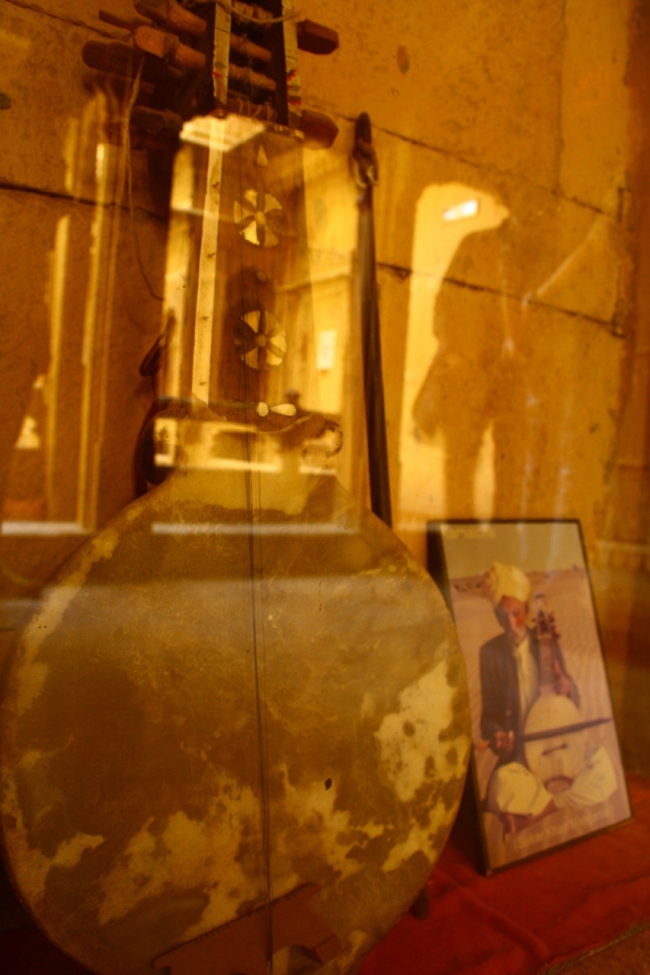
Listening to Rajasthan
A barren land stretches to eternity on both sides of this empty road. Pale and lifeless, like the sands we just left behind, to the extent that the only semblance of life seem to be the tufts of the dead grass, rendered a golden hue by the Sun which refuses to relent even in the winter months. Remorseless. And as we have crossed Jaisalmer on our way to Jodhpur, the horizon is marked not by sand dunes but by several windmills, in all directions. My friend from Mumbai has taken a liking to the cool morning breeze and is off to sleep. And so I’m left with little more than these windmills and the music of 90s Bollywood movies to give me company. From the foothills of the Himalayas to the desert in Rajasthan, 90s Bollywood music is the all- time favourite of bus drivers in the Indian countryside. And I must concede here that it’s not always soothing. For instance, the driver in this bus is playing, ‘Teri yaad satati hai.. milne ko bulati hai’. My friend’s lucky he’s off to sleep.
As the bus stops at a ‘phatak’ – a railway crossing, (and there is no stopping the painful music), my thoughts wander back to the other music that I’ve heard in Rajasthan, far more mellifluous. Coming from a boy in Mandore, the ancient fortress, where he played a sonorous rendition of ‘Ud ja kale kawa’ on an instrument he called ‘Ravanhattha’. Divide this word into two and you’ll have a legend of music dating back not hundreds but thousands of years. To the times when once the legendary Ravan lost his veena & cut his own forearm (hattha), to turn his fingers into tuners, his veins into strings and his elbow into a resonator! Ah! The sacrifice for that one strain of music that today resounds through every street and gully of Rajasthan, from Jaipur & Jaisalmer to Udaipur, at the entrance to every fort and in the courtyard of every palace. Yes! The land of palaces has more than its share of native musical instruments than you’d have thought.
Meanwhile, the bus stops at a village where local women board, bangles all over their hands, and veils all over their faces. Behind them, a group of army-men enters. Yes, the border with Pakistan and the historical town of Pokharan are both close by. The bus restarts and with it, another rendition of excruciating songs – ‘Tumse o hasina kabhi mohabbat na humko karni thi’. And with this I switch again to the ‘other’ music.
This time the music in my mind takes me back to a concert in the Mehrangarh fort of Jodhpur, where classical and folk came together one melodious evening. A team of talented musicians with Nawab Khan on Santoor joined another equally talented one, of the Langas, with their Sarangis and Khartals. And what began with a devotional recital in Arabic, gradually turned into an immaculate performance by Nawab Khan on the Santoor. But the greatest symphonies were to be created when the Langas would join in. The Langas, with their vocals, brought about a geniality that only the rusticity of folk music could, their Khartals at one instant, rattling their way to find an expression above the percussions of the dhol, and at the very next, losing themselves in the pulsating voices of the singers, akin to the applause of the enraptured audience. A Sindhi Sarangi played behind, lending serenity to the ensemble and the falling evening, much like its player, the other Khan sahib, probably the eldest in the group. The Sarangi, as he later told us, was his grandfather’s. Music survives way beyond us mortals do.
And, as I remember those songs, with a mix of Urdu and Rajasthani thrown in, I see the land outside my window turning greener, the grass being replaced by shrubs, the dunes with the first sights of leveled lands. And soon, the bus halts at Pokharan. The army-men alight and we follow, to be greeted by signs of the ‘Famous Cham-Cham of Pokharan’ at eateries all around us. Excited by the prospect of another culinary discovery, we try it, and it turns out disappointing, its taste embittered further by the lame ‘radio-active cham-cham‘ joke from my friend. He is clearly better off sleeping.
We now board the bus for the last leg of the journey to Jodhpur(& hopefully of the painful music). I remember the narrow approach with which I had come here, for attending the World Sufi Music Festival. The only musicians I intended to listen to were those from outside India. And so I had skipped the Manganiyar concert. Only now, after listening to the Langas and reading about both communities in Jaisalmer, I rue my earlier decision. The Maganiyars are musicians from villages around Jaisalmer & Barmer and embody a tradition of music centuries old, where they, Sunni Muslims, would sing for their Hindu patrons. They still continue to sing in several parts of Rajasthan. It’s still not difficult to spot an old Manganiyar with an even older Kamaycha in his hands singing ‘Moomal’ somewhere around the mud houses of the desert.
Meanwhile, the view from the window turns more vivid as I now spot a few cranes flying outside. The area is close to Khichan, which witnesses annual migration of Demoiselle cranes during this time. The music in the bus has stopped. Soon I’d be reaching Jodhpur & it’d be time to leave. But I will go back with more fertile ears than ever before. I take with me the music of the deserts, at once plangent, at once buoyant, of longing and belonging alike. I hope that the next time you come here, you don’t just stare at these palaces, but listen to them too. Don’t merely hear the legends of the royals, but also hear the echo of those who sang for them. Don’t just pass by the next Ravanhatta player beside you, but sit with him & ask him to play your favourite song, or may be join along, a ‘moomal’ or a ‘ghorband’ perhaps ( & it doesn’t matter if your singing is hit only in the bathroom). This is music that has lasted centuries, may be millennia, not the Bollywood music that you’d run way from in a few years!
Liked this post? Follow TravelByts on Facebook & Twitter for more!
(This post was earlier published with Yahoo India Lifestyle Travel blog)
Have you been to Rajasthan? What was your experience like? Has the music of a place ever left an impression on you?
You may also like –
